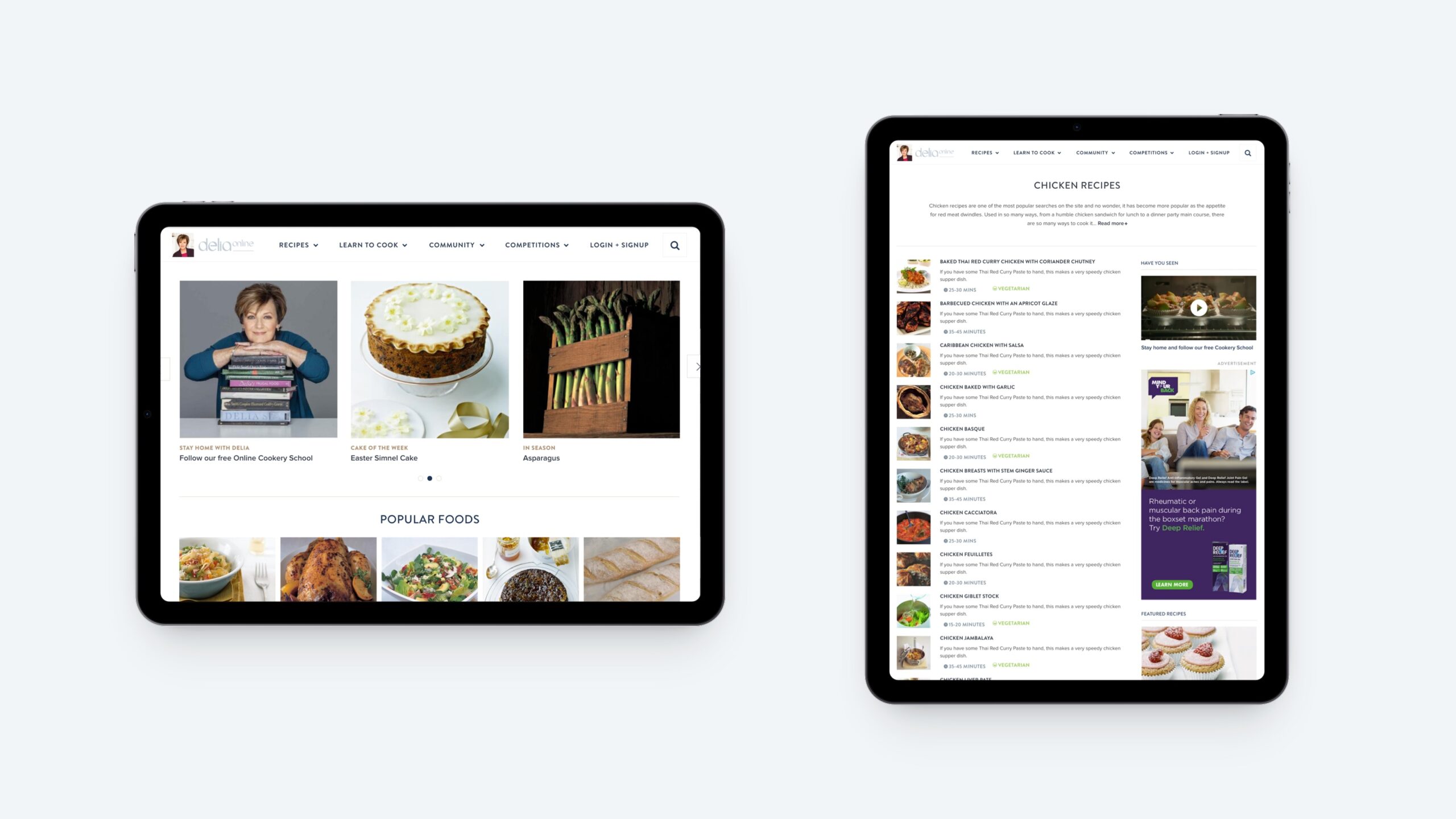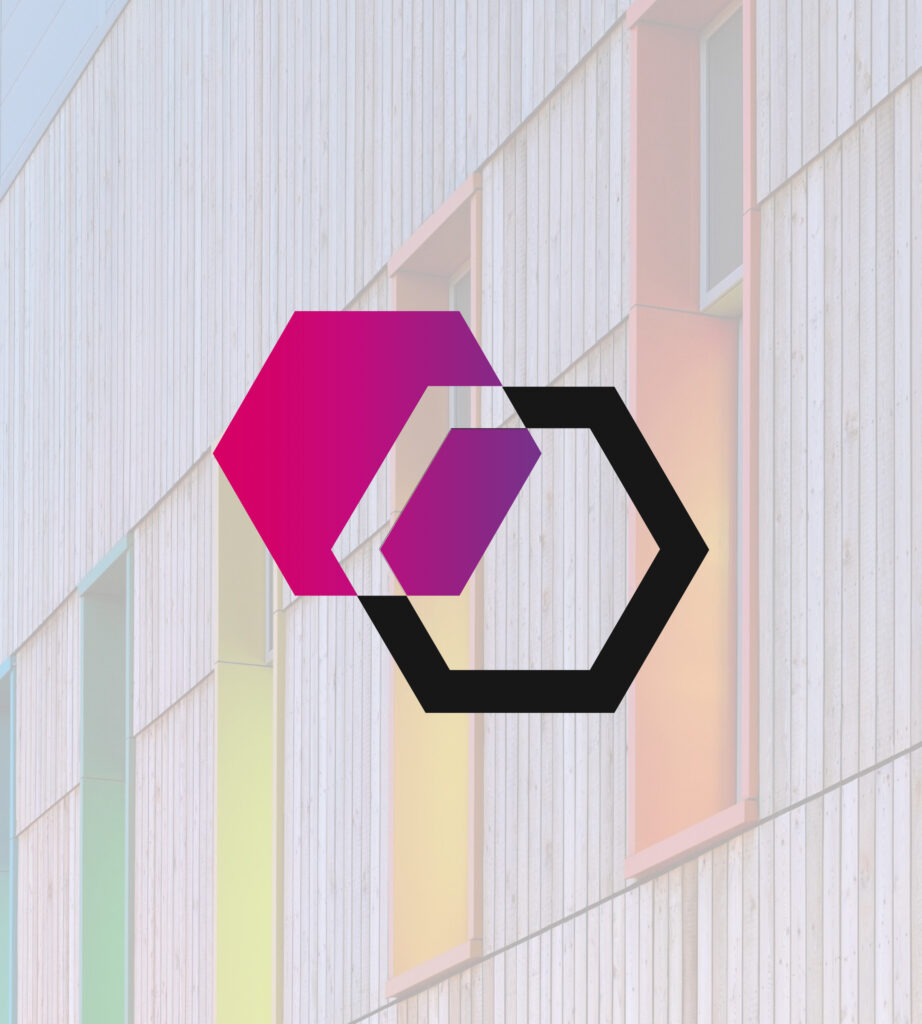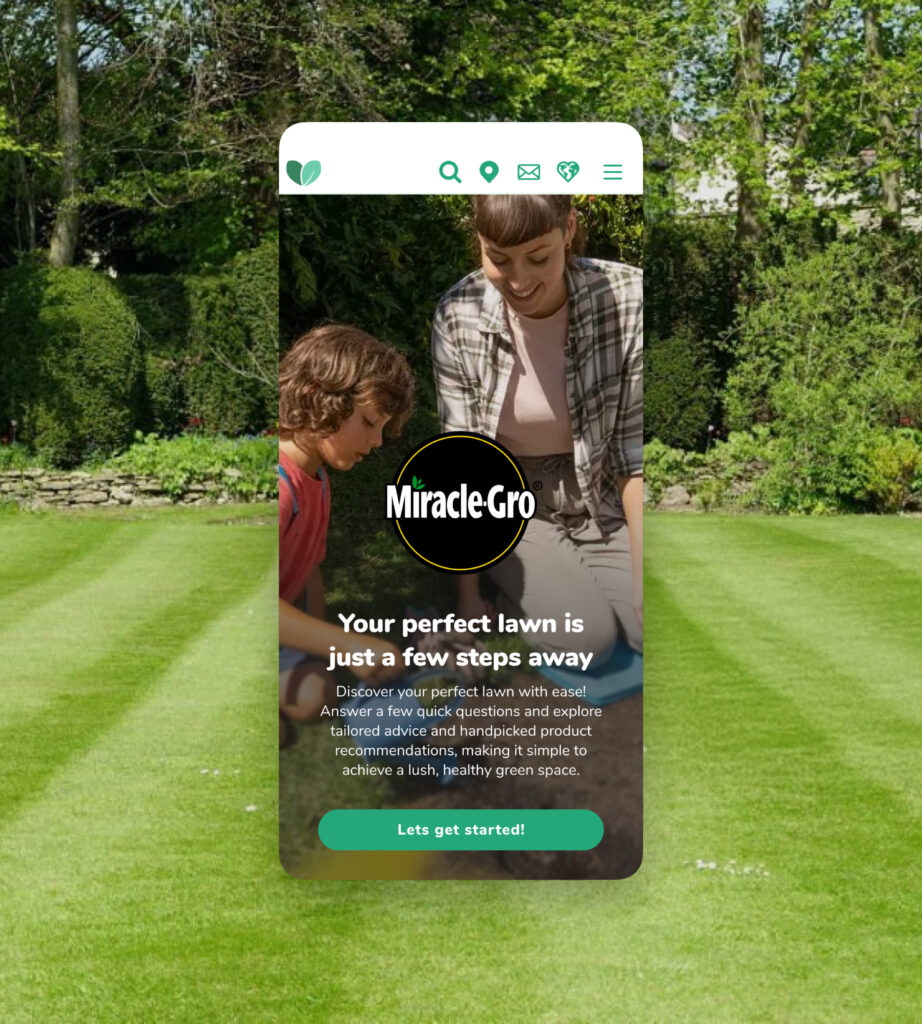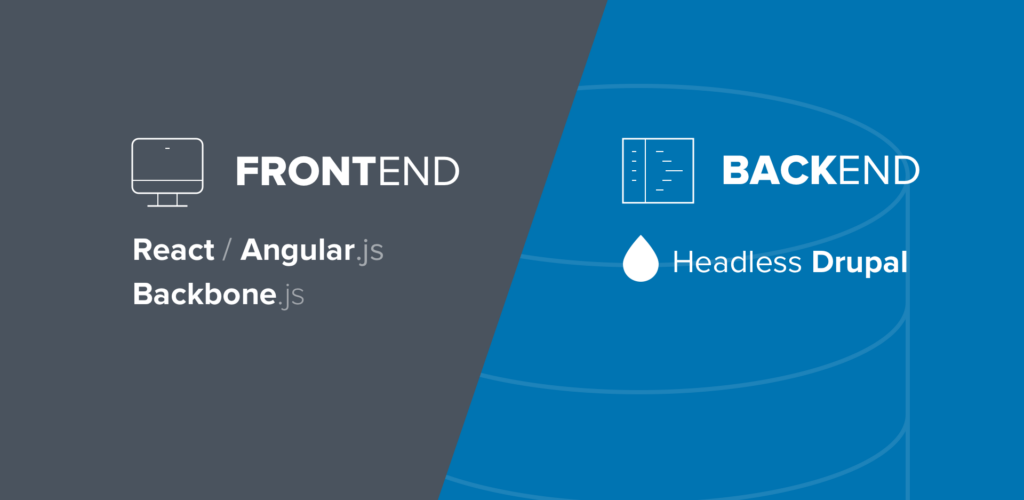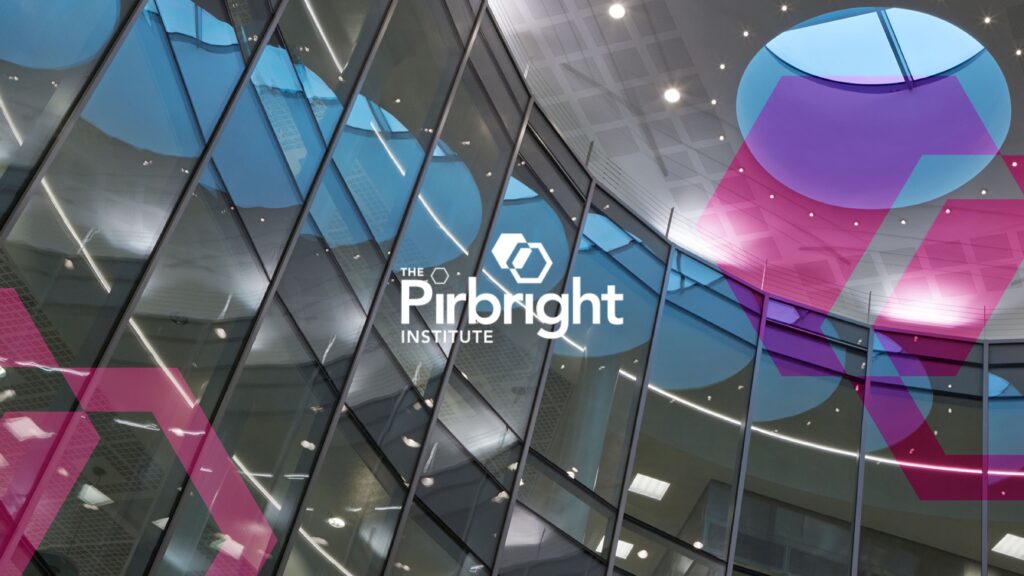Expert Drupal agency UK
Transform your digital presence with Drupal
As one of the world’s leading website platforms, the Drupal content management system (CMS) delivers enterprise-level websites and experience platforms. An open-source platform, it eliminates licensing fees and vendor lock-in, giving you complete ownership of your digital platform.
This freedom extends to how you develop, host, and grow your site over time. Results-driven, agile, and collaborative, Lightflows is an experienced Drupal development agency with over 15 years of experience. Choose us for your next project.
Our Drupal services
What we do
01
Custom Drupal website development
02
Website consolidation with Drupal
03
Migration to Drupal 9/10 and beyond
04
Drupal consulting and strategy
05
Drupal personalisation and UX optimisation
06
Drupal theme development
07
Drupal module development
08
Third-party system integrations
09
Drupal DevOps, hosting, and infrastructure
10
Support, maintenance & performance optimisation
11
Building a Drupal DXP with Acquia or similar platforms
01 /
Custom Drupal website development
We design and build bespoke Drupal websites that perfectly align with your brand, objectives, and audience needs. Each Drupal web development project begins with deep discovery, ensuring we understand not just what you want to build, but why it matters to your organisation. This foundation informs every subsequent decision, from information architecture to visual design, functionality to content strategy. Our development process is structured to achieve your business goals through custom Drupal development solutions.
02 /
Website consolidation with Drupal
Many organisations struggle with fragmented digital estates – multiple websites built on different platforms, creating maintenance headaches and inconsistent user experiences. Our Drupal web development company specialises in consolidating these disparate properties into unified, manageable Drupal platforms that reduce technical debt while improving governance and user experience.
03 /
Migration to Drupal 9/10 and beyond
If you’re running an older version of Drupal, migration is essential to maintain security and access modern features. Our systematic migration approach minimises disruption while maximising the benefits of newer Drupal versions. As experienced Drupal experts, we handle everything from content mapping to custom code adaptation, ensuring a smooth transition to a future-proof platform.
04 /
Drupal consulting and strategy
Not sure how to approach your Drupal project? Our Drupal agency provides expert guidance at any stage of your journey. We can audit existing sites, develop technical roadmaps, advise on architecture decisions, or help you build internal capability. Our pragmatic, experience-based recommendations help you make informed choices that align with your long-term digital strategy
05 /
Drupal personalisation and UX optimisation
Today’s users expect relevant, personalised experiences. Our Drupal web development services implement sophisticated personalisation strategies using Drupal’s powerful tools, targeting content based on user behaviour, preferences, or explicit selections. Combined with ongoing UX optimisation informed by analytics and user testing, this creates exceptionally engaging digital experiences.
06 /
Drupal theme development
Our Drupal theme development services create visually stunning, responsive, and accessible front-end experiences. Our designers and front-end developers collaborate to transform design concepts into pixel-perfect Drupal themes that reflect your brand identity while optimizing for performance and user experience. We build custom themes that leverage Drupal’s core features while adding distinctive visual elements and interactions that set your website apart
07 /
Drupal module development
When existing solutions don’t meet your specific requirements, our custom module development services bridge the gap. Our Drupal developers create bespoke modules that extend Drupal’s functionality in exactly the ways your business needs. From simple utilities to complex feature sets, our custom modules integrate seamlessly with Drupal’s architecture while maintaining security, performance, and upgradeability.
08 /
Third-party system integrations
Drupal rarely exists in isolation. Our Drupal experts specialise in connecting your Drupal platform with other business systems – from CRMs and marketing automation tools to payment gateways, ERP systems, and bespoke applications. These integrations create seamless workflows, eliminate data silos, and maximise the value of your technology investments.
09 /
Drupal DevOps, hosting, and infrastructure
Performance, reliability, and security depend on solid infrastructure. Our Drupal web development company provides end-to-end DevOps services for Drupal, including cloud hosting configuration, continuous integration/deployment pipelines, automated testing, and infrastructure-as-code. Our approach ensures your Drupal platform is robust, scalable, and efficiently maintained
10 /
Support, maintenance & performance optimisation
Launching your Drupal site is just the beginning. Our Drupal agency provides support and maintenance services that ensure your platform remains secure, stable, and optimised. From routine updates to performance tuning, bug fixes to feature enhancements, we provide responsive, proactive care that protects your digital investment.
11 /
Building a Drupal DXP with Acquia or similar platforms
For organisations requiring advanced digital experience platforms, we leverage Drupal’s enterprise capabilities alongside specialist tools like Acquia. These integrated platforms provide sophisticated content management, personalisation, commerce, and analytics capabilities – delivering exceptional experiences across multiple channels from a unified foundation.
Why choose Drupal for your web development in 2025?
There are many reasons to choose Drupal as your next CMS or experience platform, here are just a few.
As one of the world’s leading open-source platforms, Drupal eliminates licensing fees and vendor lock-in, giving you complete ownership of your digital platform. This freedom extends to how you develop, host, and grow your site over time. Our clients value the transparency, flexibility, and cost-effectiveness that comes with choosing an open-source Drupal web development solution. Our Drupal developers are committed to open-source principles, contributing back to the community while creating sustainable, future-proof solutions for our clients.
Whether you’re building a content-rich website, a complex web application, or an integrated digital experience platform, Drupal grows with your ambitions. Its modular architecture allows for seamless scaling – from handling increased traffic to expanding functionality as your organisation evolves. Our Drupal agency specialises in creating scalable solutions.
Drupal excels at delivering content that ranks well and reaches all users. With built-in features like clean URL structures, customisable metadata, responsive design, and WCAG compliance capabilities, Drupal web development provides a solid foundation for both search visibility and accessibility. We leverage these strengths to ensure your content reaches its widest possible audience.
Security is built into Drupal’s DNA. With a dedicated security team, regular updates, and a vigilant community, Drupal offers enterprise-grade protection for your digital assets. Our Drupal web development company adds further layers of security through careful configuration, regular updates, and proactive monitoring.
With thousands of contributed modules available, Drupal can be extended to meet virtually any functional requirement. From content workflows to e-commerce, social features to advanced analytics – if you can imagine it, Drupal can likely support it. Our Drupal experts are skilled at selecting, configuring, and sometimes creating custom modules to achieve your specific goals.
Managing content across multiple languages or websites becomes dramatically simpler with Drupal’s built-in capabilities. Our Drupal web development services have helped international organisations create cohesive yet localised experiences across dozens of countries, all from a single, manageable platform.
Today’s users expect lightning-fast experiences, and Drupal delivers. With advanced caching, optimised database queries, and efficient code, Drupal sites can handle enormous traffic volumes while maintaining responsive performance. Our technical optimisations take this even further, ensuring your site performs flawlessly even during peak demand.
From straightforward online stores to complex marketplace solutions, Drupal Commerce provides a flexible foundation for e-commerce. Its integration with Drupal’s content management capabilities creates uniquely compelling shopping experiences that convert browsers into buyers. Our Drupal agency has extensive experience building sophisticated e-commerce solutions.
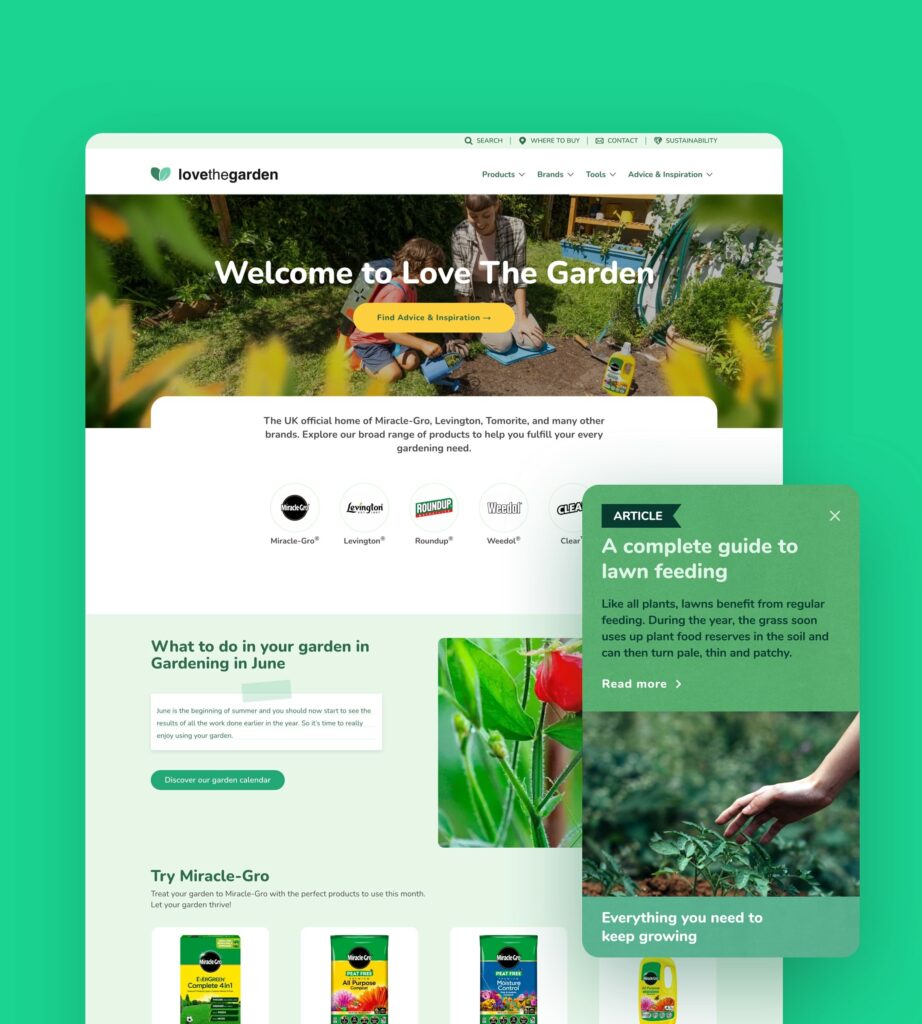
When should you use Drupal?
While Drupal works on websites of any size, it excels at larger projects requiring more complex functionalities. Due to its system of modules, features can be plugged together to create bespoke applications and websites. This modular nature reduces the amount of custom code which needs to be written, delivering more functionality in a shorter time and at a lower cost.

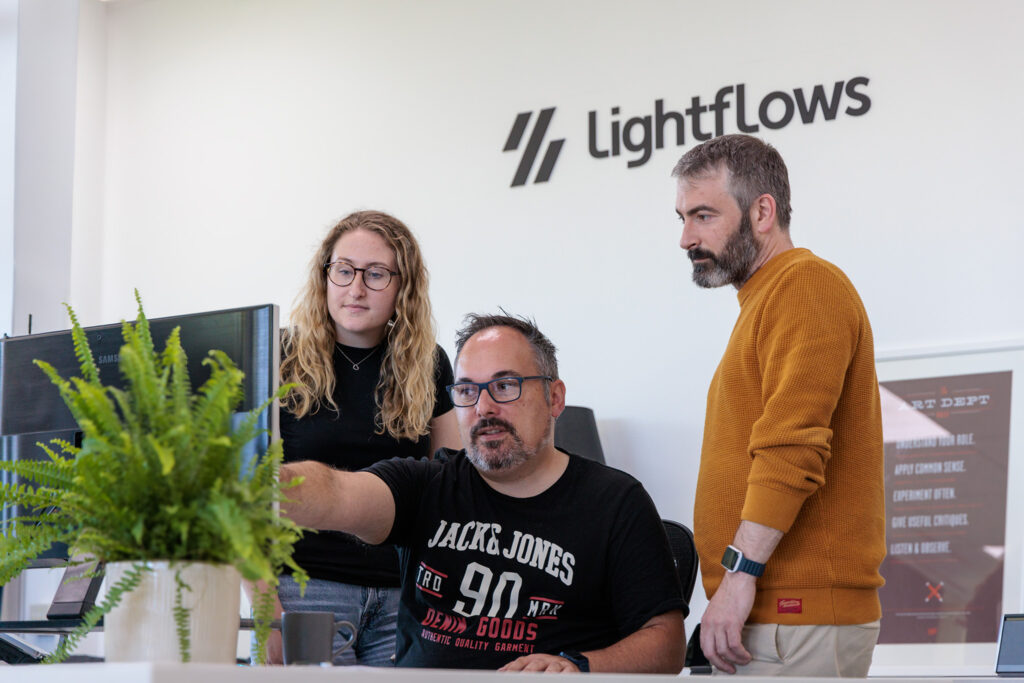
How we can help
Lightflows are one of the UK’s leading Drupal development companies with a portfolio of large projects under our belts. We develop and maintain large Drupal web applications for businesses with high-tech needs, including those in the FinTech, Science Tech and Property Tech industries.
Unlike other companies, we don’t outsource our Drupal development work. Instead, we manage every project in-house as this delivers the best results. We offer end-to-end design, development, delivery, hosting and consultancy services for our Drupal projects.
Why choose Lightflows as your Drupal Agency partner
There are many reasons to choose Lightflows as your Drupal project partner; here are just a few.
When you work with Lightflows, you’re partnering with one of the UK’s most established Drupal web development companies. Our Drupal experts have successfully delivered hundreds of projects across diverse sectors – from enterprise-level businesses to government organisations, educational institutions, and innovative startups. Our portfolio demonstrates our ability to solve complex challenges with elegant, effective solutions that exceed expectations.
Since 2008, we’ve been at the forefront of Drupal web development, evolving our expertise alongside the platform itself. As a dedicated Drupal development agency, we’ve weathered every major Drupal transition, turning potential challenges into opportunities for our clients. This depth of experience means we understand not just how to build with Drupal, but how to architect solutions that stand the test of time.
Our Drupal web development services have been recognised with numerous industry awards for digital excellence. Our team includes certified Drupal experts, experienced UX designers, and digital strategists who collaborate to create cohesive, powerful digital experiences. We’re proud of our reputation for technical innovation combined with exceptional Drupal web design thinking.
Your project is in safe hands with our ISO 27001 certified processes. These internationally recognised standards ensure we maintain the highest levels of quality management and information security throughout our Drupal web development work. For clients in regulated industries or those handling sensitive data, this provides essential peace of mind.
As a committed Drupal development agency, we don’t just use Drupal – we help shape its future. Our Drupal experts regularly contribute code, documentation, and support to the Drupal project. This commitment to open source keeps us at the cutting edge of Drupal web development and ensures we bring the latest innovations and best practices to your project.
Managing content across multiple languages or websites becomes dramatically simpler with Drupal’s built-in capabilities. Our Drupal web development services have helped international organisations create cohesive yet localised experiences across dozens of countries, all from a single, manageable platform.
Today’s users expect lightning-fast experiences, and Drupal delivers. With advanced caching, optimised database queries, and efficient code, Drupal sites can handle enormous traffic volumes while maintaining responsive performance. Our technical optimisations take this even further, ensuring your site performs flawlessly even during peak demand.
From straightforward online stores to complex marketplace solutions, Drupal Commerce provides a flexible foundation for e-commerce. Its integration with Drupal’s content management capabilities creates uniquely compelling shopping experiences that convert browsers into buyers. Our Drupal agency has extensive experience building sophisticated e-commerce solutions.
White label Drupal development and project rescue
Upgrading Drupal and Drupal version end-of-life
If you have a project that has gone off-track or don’t have in-house Drupal experience, we can help with our white label services. We have rescued a number of projects to date and are more than happy to take on more.
Do you have a Drupal 7 or Drupal 8 website that needs upgrading?
We can help upgrade your system to the latest version of Drupal 9.
Certifications, partnerships & standards
Certified Drupal experts
Our Drupal web development company includes Drupal-certified developers who have demonstrated their expertise through Acquia’s rigorous certification programme. This independent validation of our technical knowledge ensures we apply best practices across all aspects of Drupal development.
Strategic partnerships with Acquia
As strategic partners with leading technology providers like Acquia, we access specialised training, technical resources, and early insights into platform developments. These relationships enhance our capability to deliver exceptional Drupal web development services and provide our clients with additional expertise when needed.
ISO 27001 compliance
Our ISO certifications demonstrate our commitment to quality and information security (ISO 27001). This internationally recognised standard ensure our Drupal agency maintains consistent, documented processes that protect your data and deliver reliable results.
Your trusted digital partner
We excel at marketing websites, innovative web apps and mobile applications, and have helped several funded startups achieve success, building their digital products, as well as many established businesses.
200+
Products launched
16
Years in business
17+
Team members
10+
Awards
Case Studies
Case Studies
Case Studies
Case Studies
Drupal case studies
Our Drupal web development approach
Forget functional. We build digital products that get people excited—and deliver the results you need.
01
Solution discovery & planning
Every successful Drupal web development project begins with thorough discovery. We work closely with your team to understand business objectives, user needs, technical requirements, and content strategies. This collaborative process builds shared understanding and establishes clear, achievable goals for your Drupal project.
02
Technical architecture & engineering
Our Drupal experts design robust, scalable solutions that meet both current needs and future ambitions. We make considered choices about hosting, integration approaches, content structures, and technical stack – creating a solid foundation for development. Our engineering practices emphasise code quality, performance, and maintainability.
03
User-centred Drupal web design & accessibility
Great technology deserves great design. Our Drupal web design team creates intuitive, engaging interfaces that make complex functionality feel simple. We design with accessibility in mind from the start, ensuring your Drupal platform works for all users, regardless of ability or device.
04
Agile delivery with team extension options
Our Drupal development agency adapts delivery approaches to suit your needs. For most projects, we use agile methodologies that provide transparency, flexibility, and regular incremental value. For organisations with internal development resources, we offer team extension services, embedding our Drupal experts within your existing teams to boost capability and accelerate delivery.
05
Ongoing support, updates & optimisation
Our relationship continues after launch. We provide tailored Drupal web development support packages that include security updates, performance monitoring, feature development, and strategic advice. This ongoing partnership ensures your Drupal platform continues to evolve alongside your business needs.
Let’s work together
Do you have a project in mind? Or do you need some further information about our services? Feel free to get in touch below.

Enquiry Form
Our clients
Frequently asked questions about Drupal
Drupal web development services encompass the planning, design, building, and maintenance of websites and applications using the Drupal content management system. This includes creating custom themes and modules, configuring Drupal’s built-in features, integrating with third-party systems, ensuring security and performance, and providing ongoing support and enhancements. As a specialist Drupal development company, we offer comprehensive services covering the entire development lifecycle, from content types configuration to custom module development. Our Drupal solutions are designed to leverage the full potential of this powerful open-source platform.
Our team has been working with Drupal for over 15 years, spanning multiple major versions and hundreds of projects. As a dedicated Drupal development company, we have certified Drupal developers, active community contributors, and specialists in areas like theme development, custom module development, migration, commerce, and performance optimisation. This depth of experience ensures we can handle any Drupal challenge, from straightforward brochure sites to complex enterprise implementations. Our Drupal developers are committed to delivering solutions that align perfectly with your business goals.
Drupal offers exceptional flexibility, security, and scalability. It’s particularly valuable for organisations with complex content needs, multiple audiences, integration requirements, or plans for growth. The open-source nature reduces licence costs and prevents vendor lock-in, while the active community ensures the platform continues to evolve with emerging web standards and practices.
While each project is unique, most follow a similar development process: discovery and planning, UX design, technical architecture, development, testing, content migration, launch, and post-launch support. Throughout this journey, our Drupal agency maintains close collaboration with your team, ensuring the final Drupal development solutions meet both technical requirements and business goals. We carefully structure content types to create flexible, maintainable content architectures and leverage Drupal’s core features while adding custom functionality where needed. For complex projects, we typically use an agile approach with regular sprints and incremental deliveries.
Absolutely. Our Drupal development company provides comprehensive support services tailored to your needs, from basic security updates to full managed services. Our support packages can include monitoring, regular maintenance, performance optimisation, content updates, feature development, and strategic advice. We become an extension of your team, ensuring your Drupal platform continues to perform optimally and evolve with your requirements. As one of the UK’s most experienced Drupal development agencies, we understand that long-term success requires ongoing attention and refinement of your Drupal solutions.
